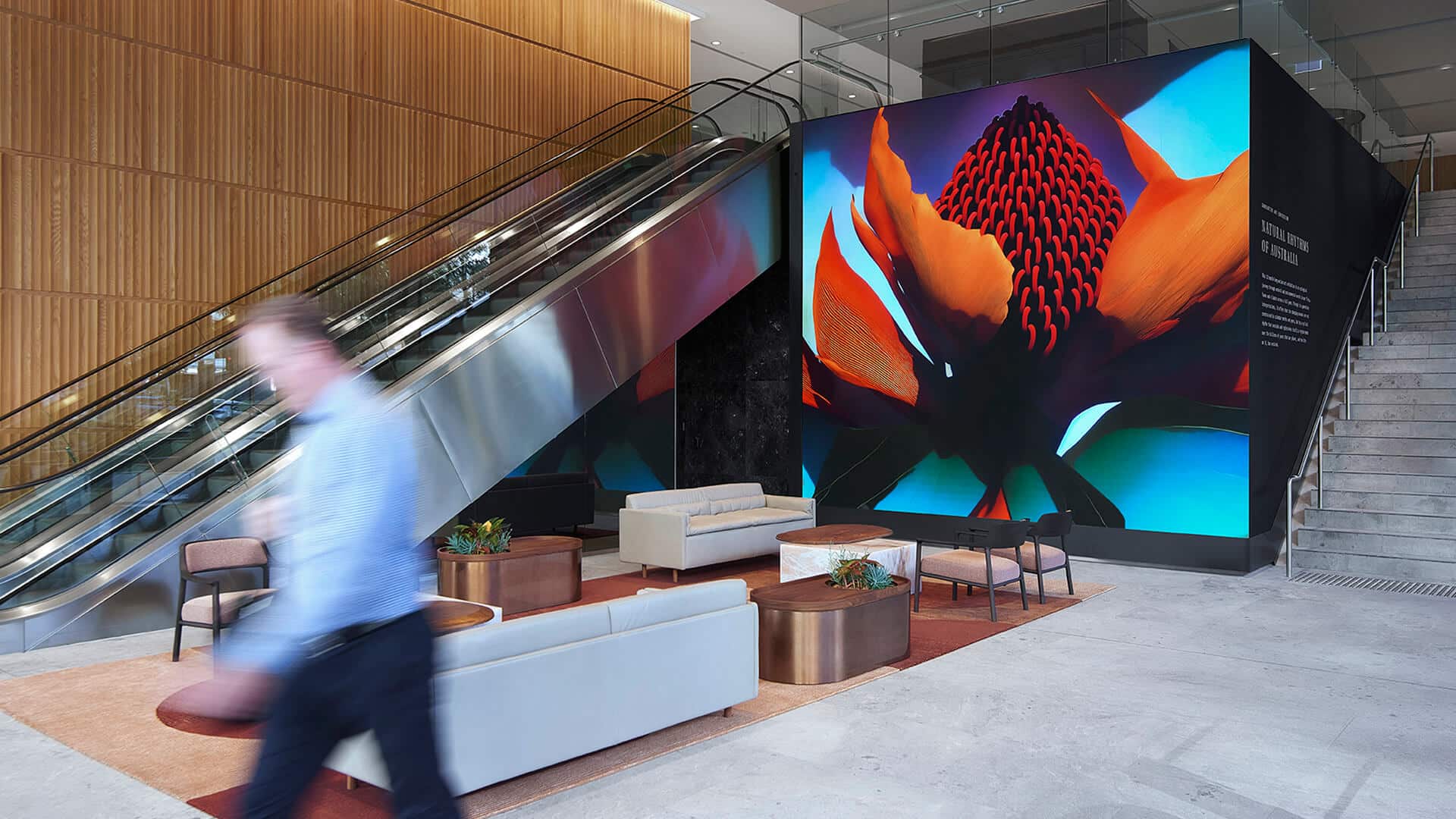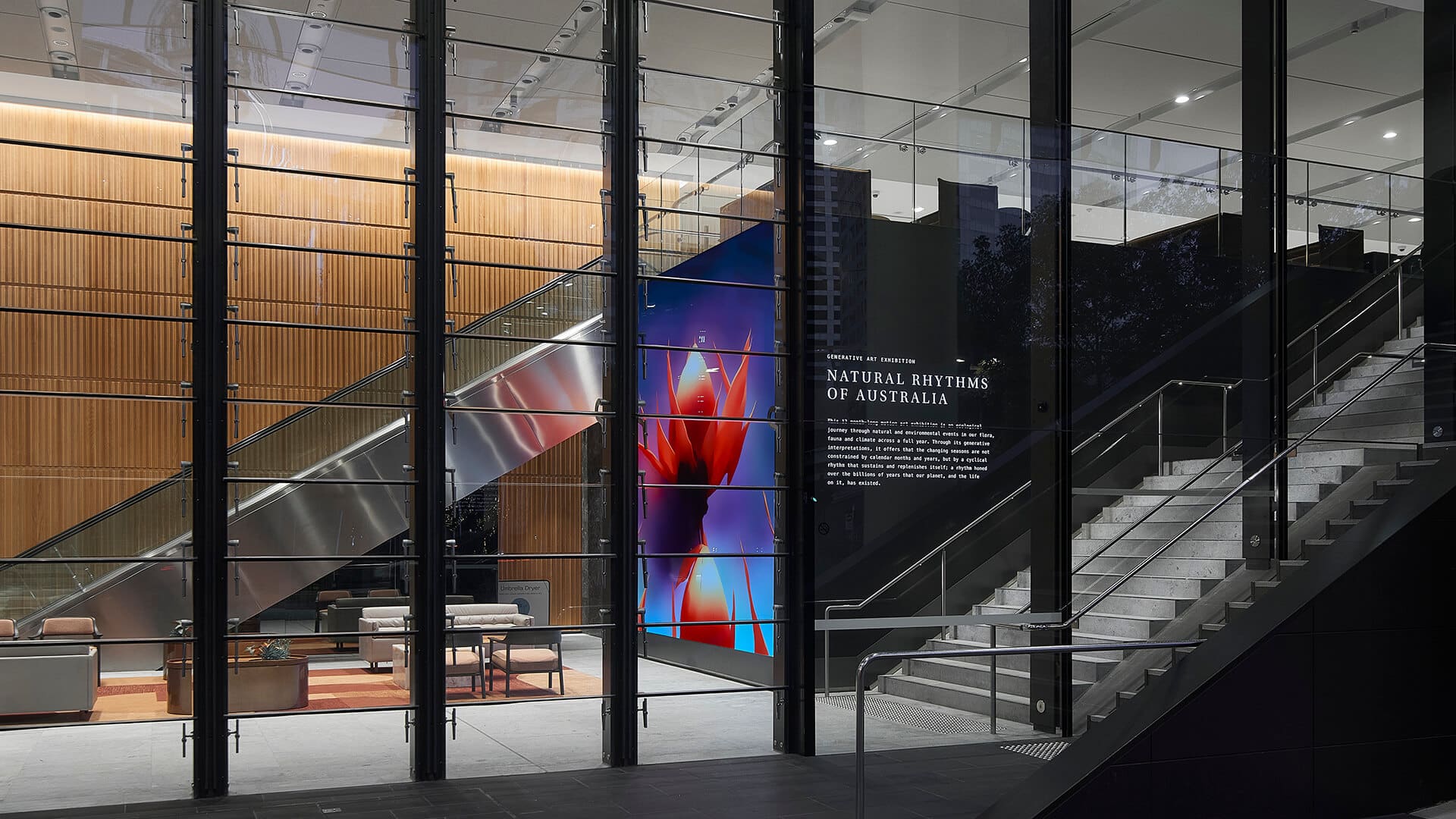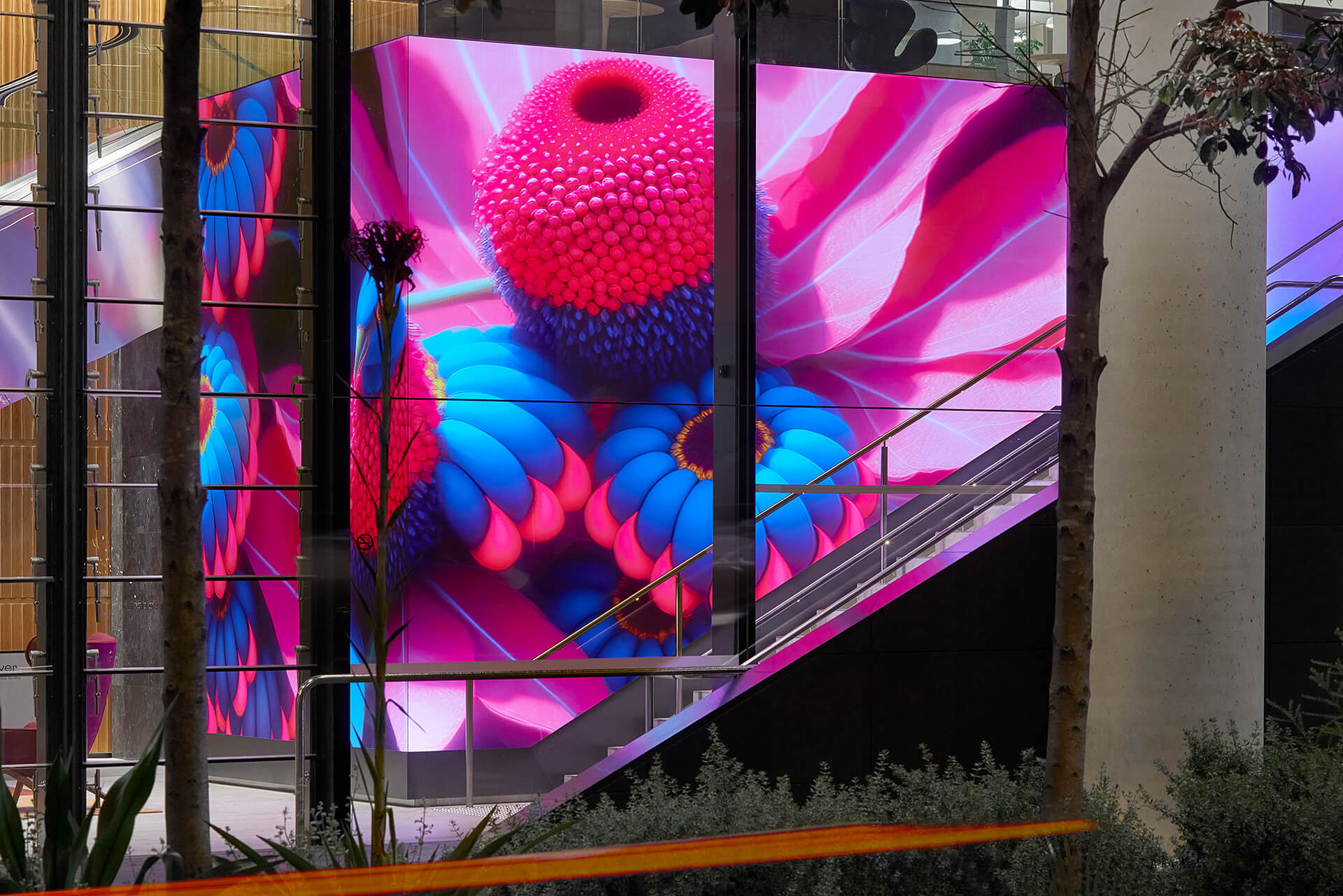NATURAL RHYTHMS OF AUSTRALIA
‘Natural Rhythms of Australia’ is a 12-month-long Generative Artificial Intelligence
motion art exhibition. The exhibition showcases a captivating ecological journey through
natural and environmental events in Australia’s flora, fauna and climate.
Across 4 artworks, ‘Natural Rhythms of Australia’ depicts sequential changes
and triggers that occur at specific times of the yearly cycle. From subtle transformations
in the air and soil, specific plant flowerings and fruiting, to noticeable quirks
in animal behaviour,it offers that the seasons are not constrained by
calendar months and years, but by a cyclical rhythm that sustains and
replenishes itself; a rhythm honed over the billions of years that our planet,
and the life on it, has existed.
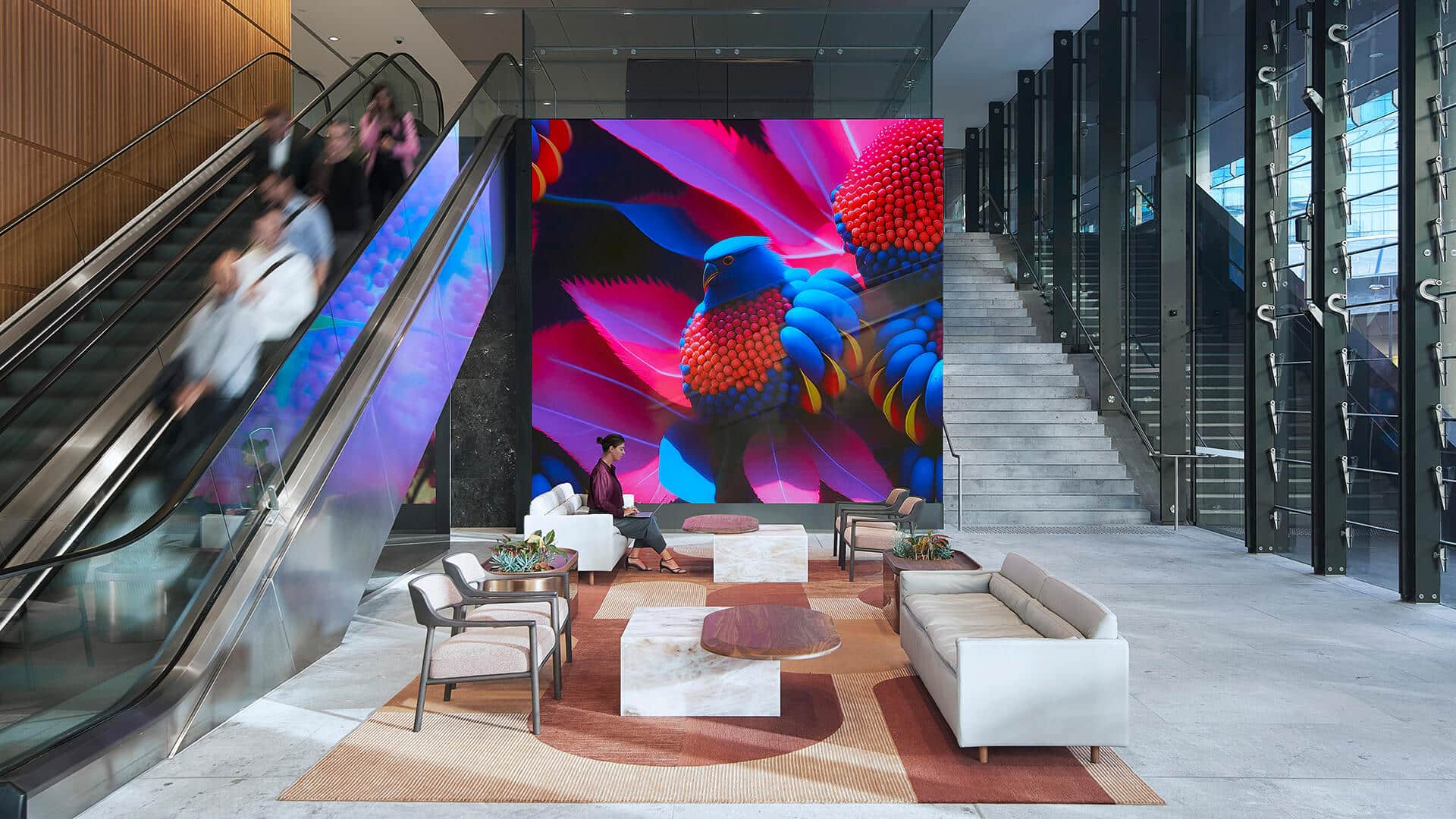
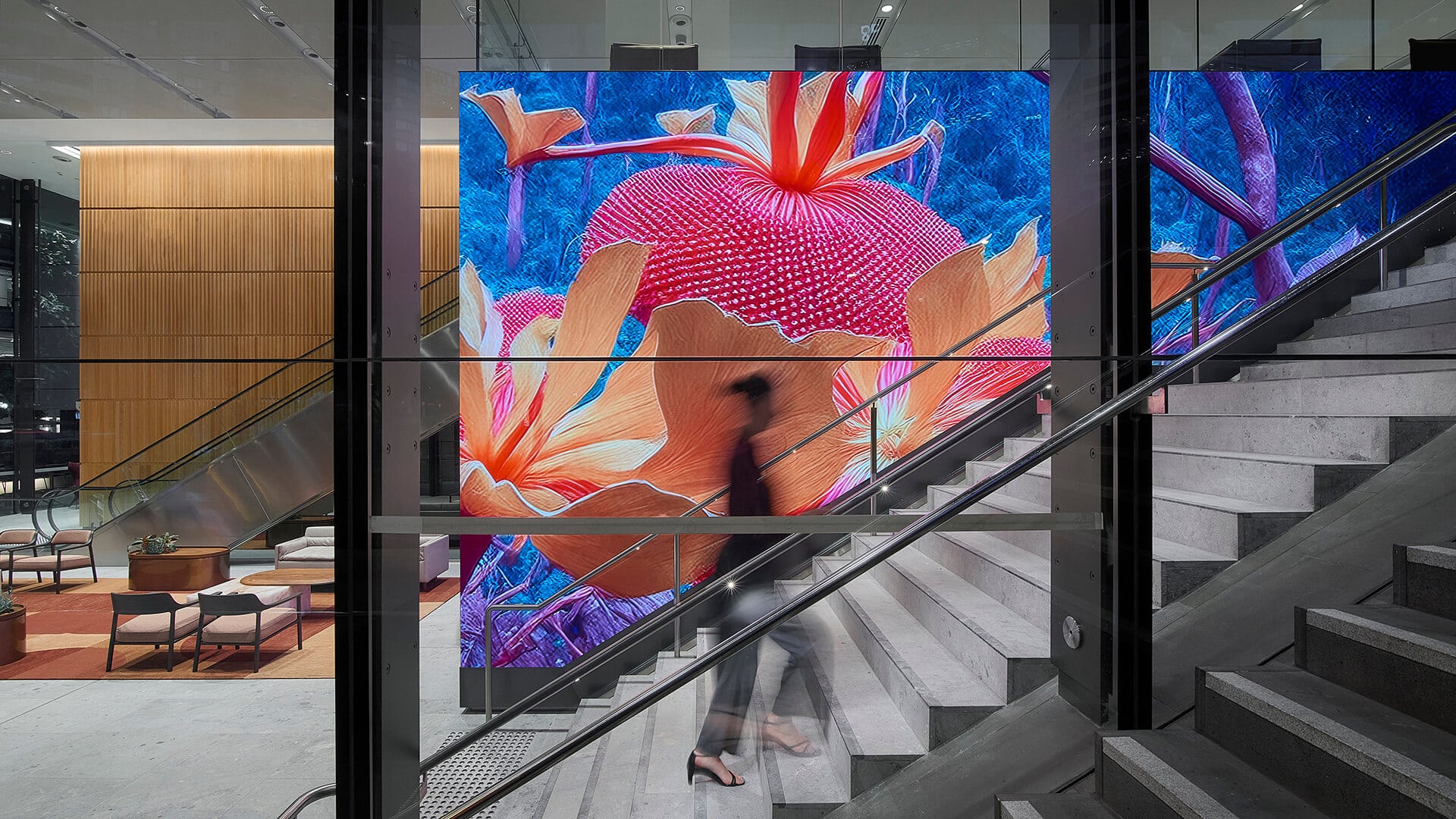
LOCATION
‘Natural Rhythms of Australia’ has been commissioned especially for the redevelopment
of the Darling Quarter North Lobby, and will be showcased on a state-of-the-art,
9×4 metre LED array, visible from multiple viewpoints around the precinct.

THE ARTWORKS
The 12-month exhibition features four artworks, which will run on a quarterly
seasonal cycle, showcasing ecological events associated with that particular time of year.
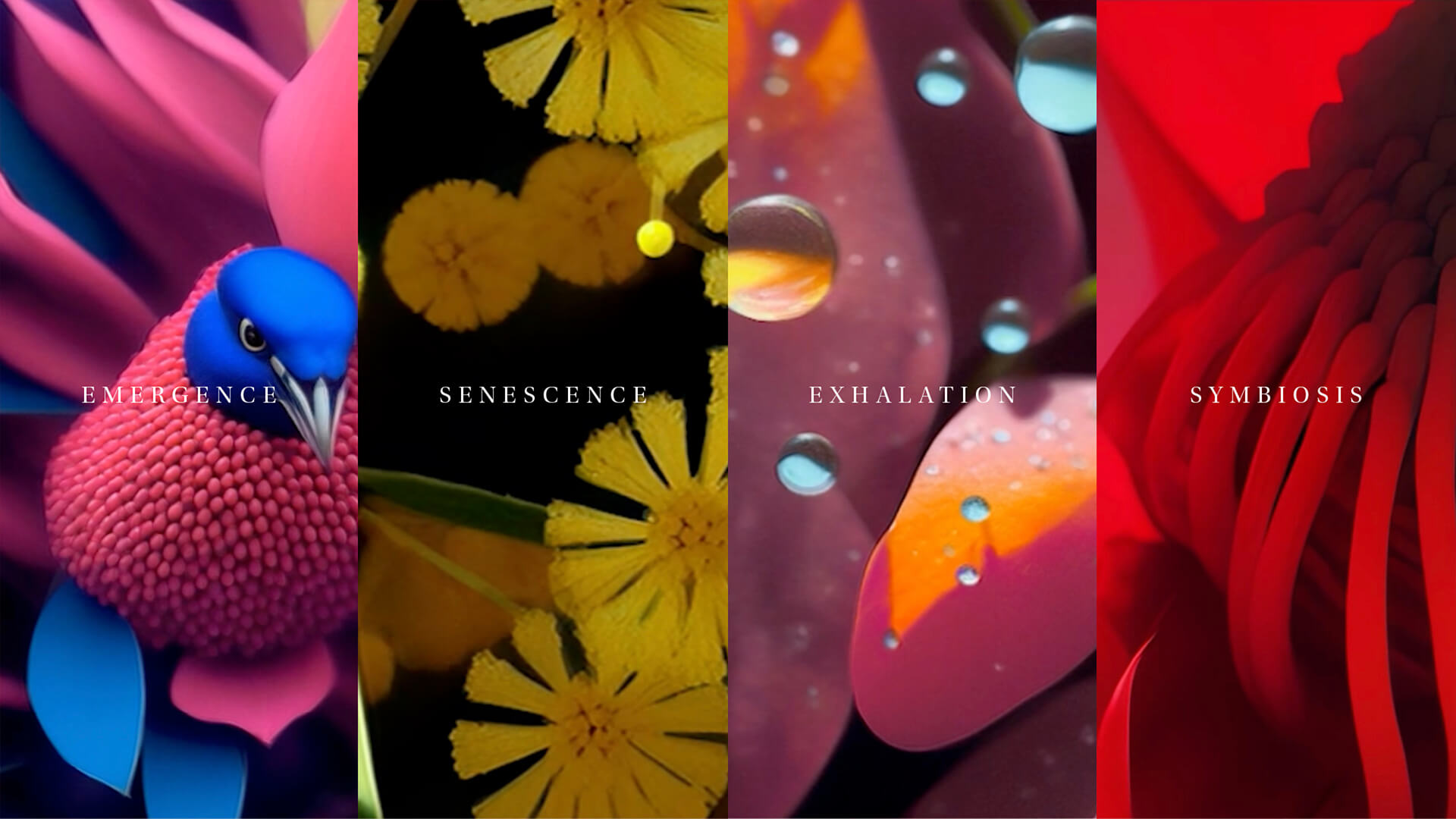
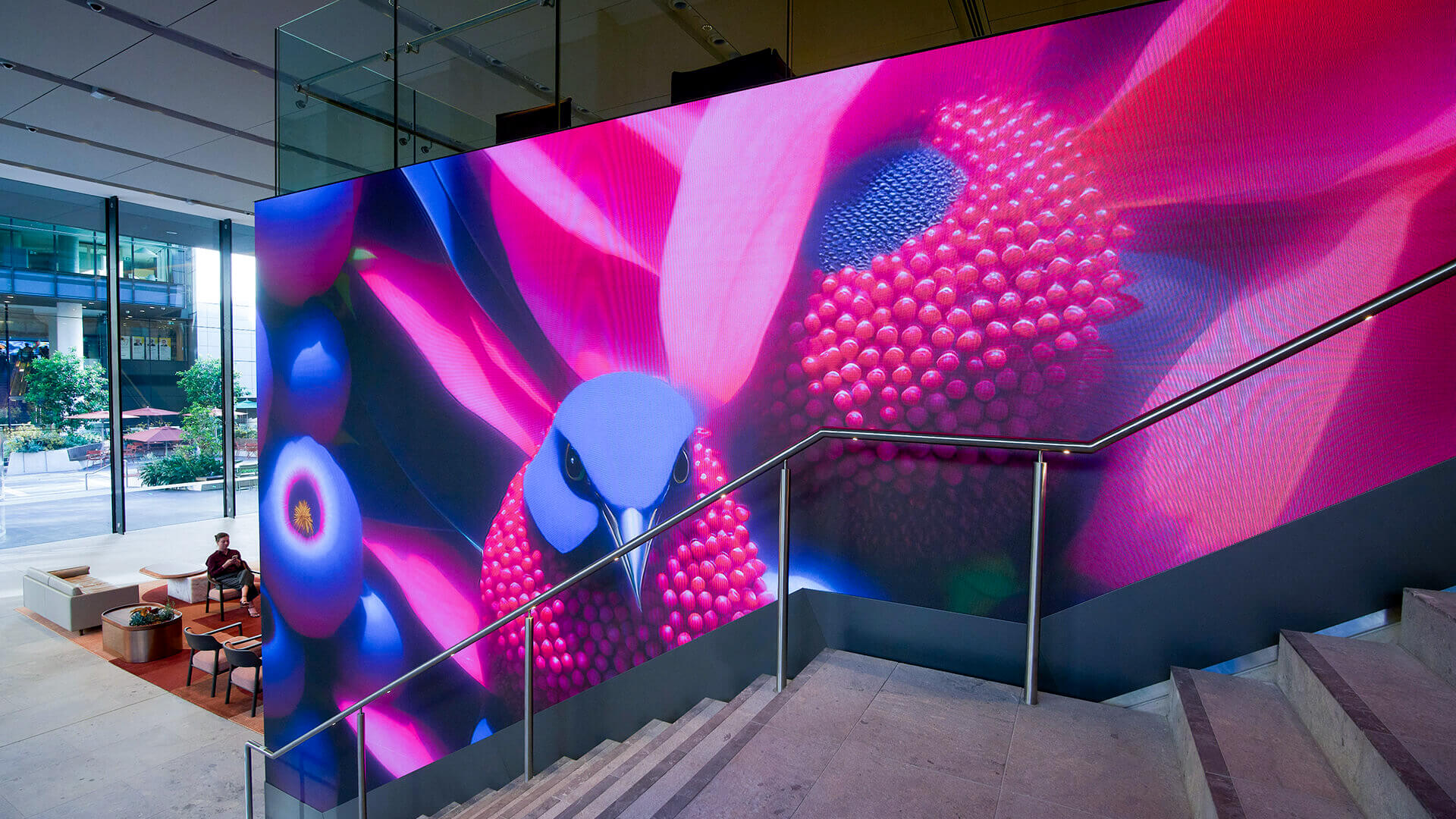
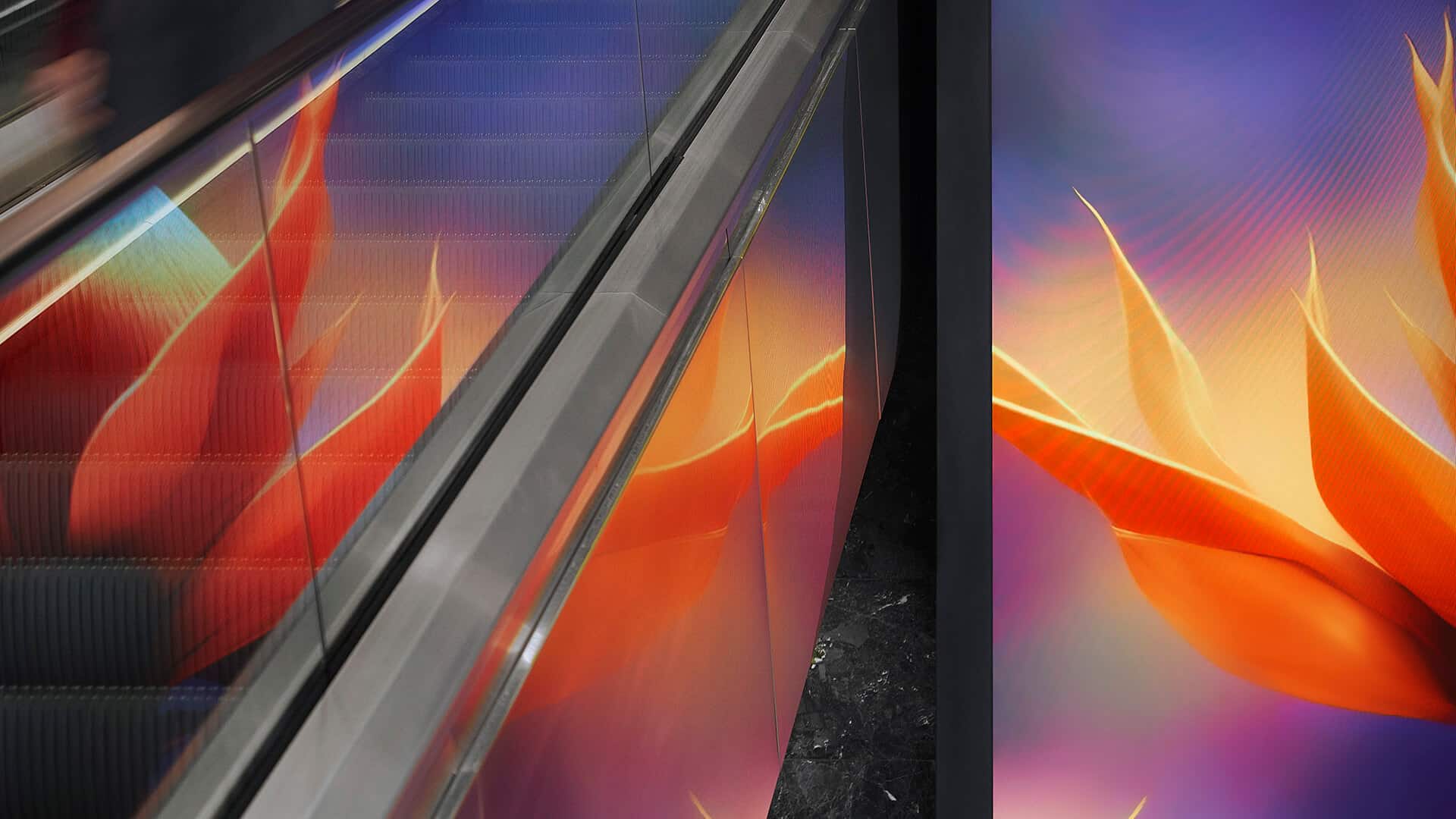
PROCESS
Natural Rhythms of Australia was developed over the course of a year of research
and development, utilising a custom built workflow of generative artificial intelligence tools.
The result is a world-first in smooth, ultra-high resolution motion art.
The key steps in the process are outlined below.
EMBEDDING
Artificial intelligence algorithms, which are responsible for the generation of the art itself,
work from a data set of imagery; but can be augmented using image-specific training,
or ‘embeddings’, which refines AI’s ‘understanding’ of an object or scene.
This process of machine learning involves feeding AI with hundreds of similar, curated images,
which it processes to identify patterns and significant features. The ‘knowledge’
it gains from ‘studying’ these images gives the human artists more control
and precision in achieving desired output results.
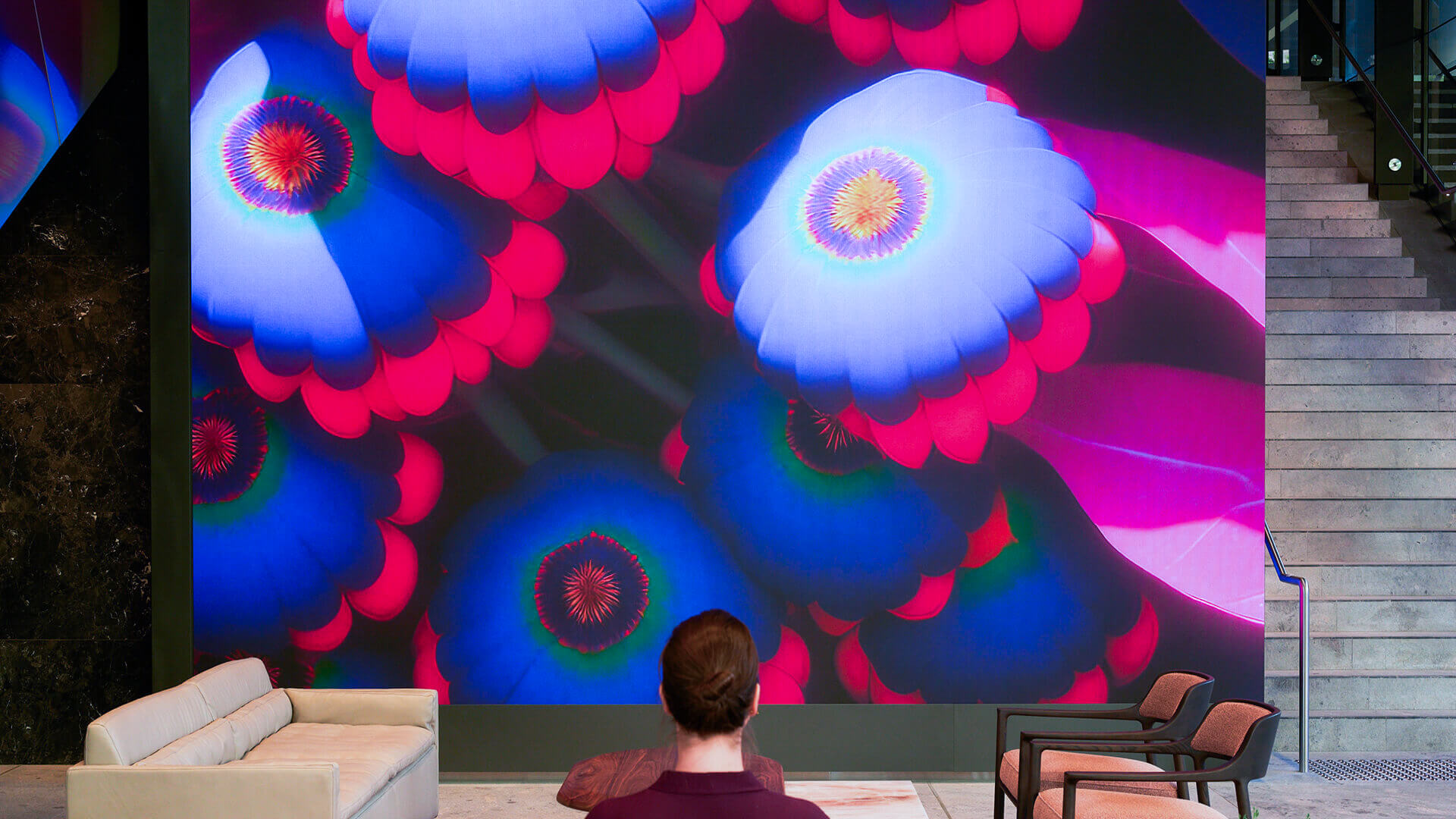
PROMPTING
Once AI has been trained on a deeper understanding of certain objects through embedding,
we create written prompts to communicate to AI what we want it to create.
Think of it like commissioning an artist to paint a picture. The more description in the prompt,
the more control over the result.
We can also use images to give AI a starting-point, which will then evolve as the algorithm takes over
and ‘develops’ the final artwork. Often AI will include unwanted elements or artefacts;
we use negative prompts to avoid this.
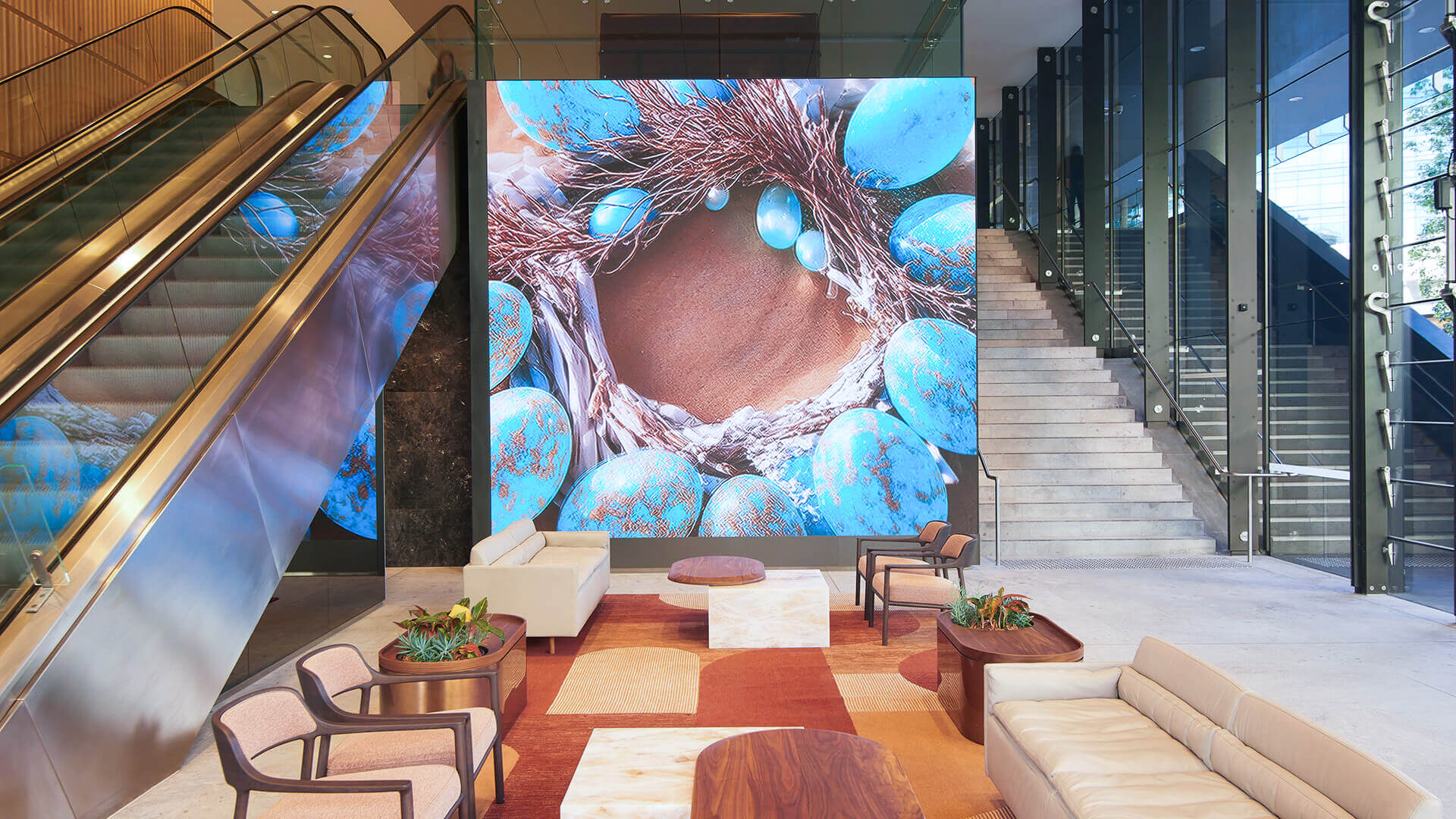
FINE-TUNING
There are hundreds of separate parameters which influence almost every aspect of AI’s output.
However, AI often produces unexpected results, and it requires continuous, iterative tweaking
of these parameters to achieve an output with the highest possible production value.
Alongside this, the technology and tools are evolving at lightning speed, with new techniques,
training models and features becoming available on what seems like an almost daily basis.
By staying on the cutting edge of generative AI, we can continue to achieve
unprecedented levels of control and quality in the finished product.
